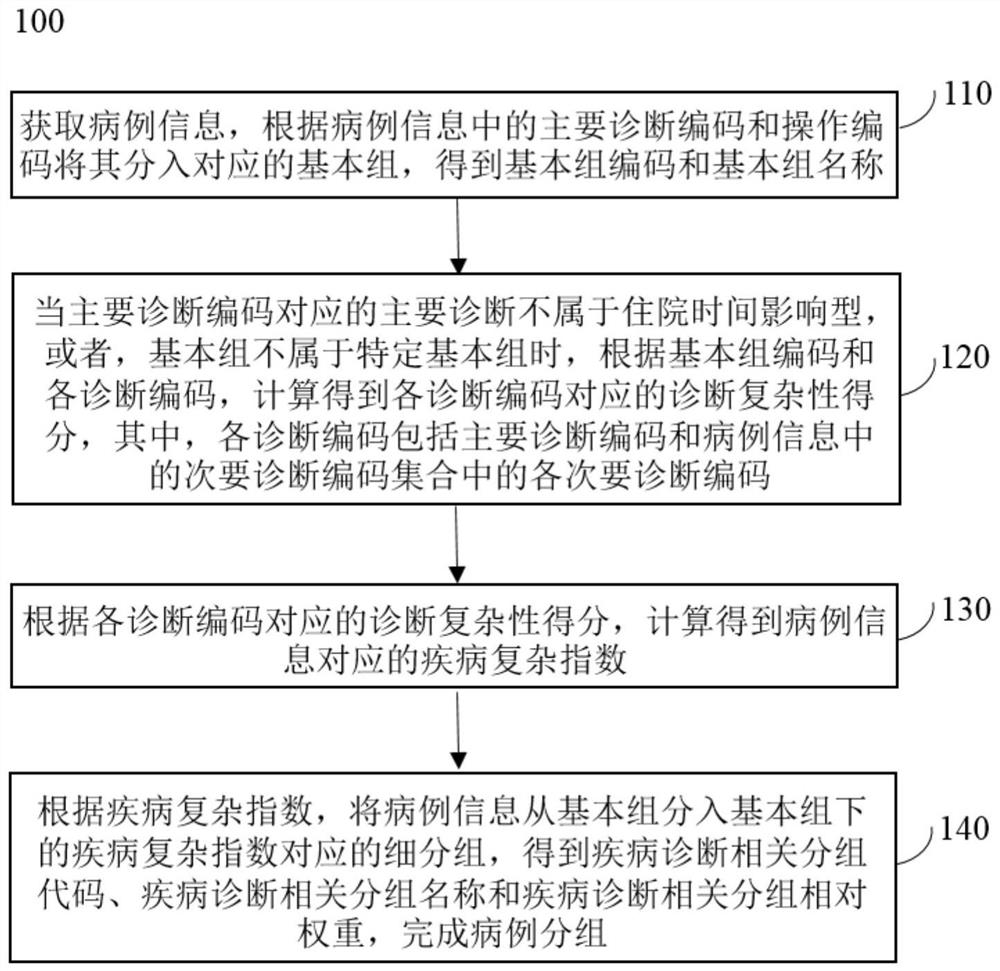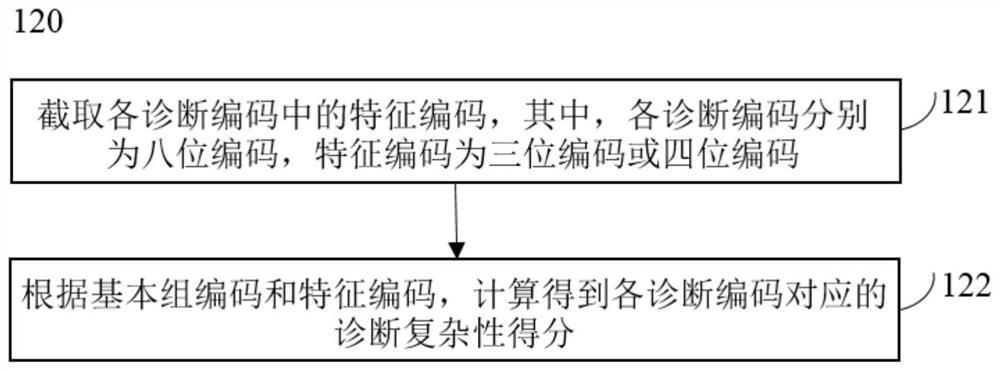A method and system for case grouping
A case and disease technology, applied in the field of medical information management, can solve problems such as inconsistency of clinical practice, and achieve the effect of eliminating human factors and regional differences, efficient treatment, and strong operability.
- Summary
- Abstract
- Description
- Claims
- Application Information
AI Technical Summary
Problems solved by technology
Method used
Image
Examples
Embodiment 1
[0046] A method 100 of case grouping, such as figure 1 shown, including:
[0047] Step 110, obtain case information, classify them into corresponding basic groups according to the main diagnosis codes and operation codes in the case information, and obtain the basic group codes and basic group names.
[0048] Step 120. When the main diagnosis corresponding to the main diagnosis code does not belong to the hospitalization time-affected type, or the basic group does not belong to a specific basic group, calculate the diagnostic complexity score corresponding to each diagnosis code according to the basic group code and each diagnosis code, Wherein, each diagnosis code includes the main diagnosis code and each secondary diagnosis code in the secondary diagnosis code set in the case information.
[0049] Step 130, according to the diagnostic complexity score corresponding to each diagnostic code, calculate the disease complexity index corresponding to the case information.
[005...
Embodiment 2
[0058] The second embodiment is a case grouping method based on the method 100 described in the first embodiment.
[0059] like image 3 As shown, on the basis of Embodiment 1, step 120 further includes: obtaining the complication exclusion list corresponding to the basic group code, and deleting the secondary diagnosis in the exclusion list from the secondary diagnosis set according to the exclusion list, When a new set of secondary diagnostics is obtained, when the diagnostic complexity score corresponding to each diagnostic code is calculated, each diagnostic code includes the primary diagnostic code and each secondary diagnostic code in the new set of secondary diagnostic codes.
Embodiment 3
[0061] The third embodiment is a case grouping method based on the method 100 described in the first embodiment.
[0062] Since some main diagnoses are greatly affected by hospitalization time (such as cancer chemotherapy) and are greater than the diagnostic complexity score, the subdivision of the case information corresponding to the main diagnosis is carried out according to the hospitalization time in the case information. Therefore, the case Information also includes length of hospital stay.
[0063] Therefore, if image 3 As shown, on the basis of Embodiment 1, the method 100 further includes:
[0064] When the main diagnosis belongs to the hospitalization time-influenced type, the case information is transferred from the basic group to the subdivision group corresponding to the above-mentioned hospitalization time under the basic group, and the disease diagnosis-related group code, disease diagnosis-related group name and relative weight of the disease diagnosis-relate...
PUM
 Login to View More
Login to View More Abstract
Description
Claims
Application Information
 Login to View More
Login to View More - R&D
- Intellectual Property
- Life Sciences
- Materials
- Tech Scout
- Unparalleled Data Quality
- Higher Quality Content
- 60% Fewer Hallucinations
Browse by: Latest US Patents, China's latest patents, Technical Efficacy Thesaurus, Application Domain, Technology Topic, Popular Technical Reports.
© 2025 PatSnap. All rights reserved.Legal|Privacy policy|Modern Slavery Act Transparency Statement|Sitemap|About US| Contact US: help@patsnap.com



